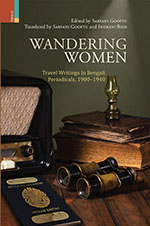Though Indians have been travelling for the last few centuries, documentation of their travels have been scarce and far between. Pilgrimage, trade, and conquest drove the earliest subcontinental travels, but it was specifically a male domain. Though much less in number as compared to the men, women’s travel writing from colonial Bengal resulted in the co-existence of conservatism and emancipation in the social history of the region. Though historically women have been more associated with fixity,
Continue reading this review


ypur4t
The next time I learn a blog, I hope that it doesnt disappoint me as a lot as this one. I imply, I know it was my option to learn, however I really thought youd have something interesting to say. All I hear is a bunch of whining about one thing that you would repair if you happen to werent too busy on the lookout for attention.